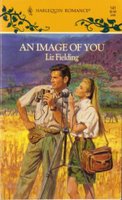Taking a look at my colleague Natasha Oakley’s blog this morning I came across this.
 “I should have looked at the proofs last night, but I was seduced by Sophie Weston's 'The Cinderella Factor' - and I'm so glad I was. It's a lovely, lovely book. Both Patrick and Jo are deliciously complicated. I also love the bigger-than-usual age gap. Jo is nineteen and Patrick is thirty-four. He's also very sexy indeed.”
“I should have looked at the proofs last night, but I was seduced by Sophie Weston's 'The Cinderella Factor' - and I'm so glad I was. It's a lovely, lovely book. Both Patrick and Jo are deliciously complicated. I also love the bigger-than-usual age gap. Jo is nineteen and Patrick is thirty-four. He's also very sexy indeed.”It was the age gap that interested me. Fifteen years ago – and I really can’t believe it’s that long – when my own first book was plucked from the slush pile my heroine was 22, or thereabouts and my hero at least 36 (and on the gorgeous cover he actually looked it!)
 Then, the experienced man of the world and the ingenue were the norm, a hangover from fairytales, the Cinderella story that inspired such great romances as Daphne du Maurier’s Rebecca. A hangover, too, maybe from two brutal wars where the alpha males were largely absent from society; a reflection of a world where women had to step up, take on the role of the absent father, absent husband. A need to feel cared for, cherished.
Then, the experienced man of the world and the ingenue were the norm, a hangover from fairytales, the Cinderella story that inspired such great romances as Daphne du Maurier’s Rebecca. A hangover, too, maybe from two brutal wars where the alpha males were largely absent from society; a reflection of a world where women had to step up, take on the role of the absent father, absent husband. A need to feel cared for, cherished.But Mills & Boon and later, Harlequin Romances, are written by women who live in the real world, women who write about the world around them. Who lived through and were part of the sexual revolution. The ingenue, that innocent, virginal girl waiting to be physically awakened by a man who would find the world renewed by her love is, today, a hard story to bring off successfully. Indeed, Sophie Weston wrote a very touching story, The Bedroom Assignment, of a woman – long past her ingenue years -- caught in exactly that situation. I’ll leave you to judge if I managed to bring it off as successfuly in The Sheikh’s Guarded Heart (September 2006).
Today, our heroines tend to be older, the survivor of at least one long term relationship and much nearer the age of the hero. Maybe it’s a reflection of a society in which women are starting families much later. Now, a thirty-something woman, finding her perfect partner, is not considered too old to start a family; to fulfil what, for most women, is a still a genuine desire to for motherhood. The books also reflect the complications of our world. Mix and match families. Single parents. Even, in books like Jennifer Crusie’s about to be republished bestselling M&B romance, Anyone But You, the women who do not want to be mothers.
Mills & Boon romances never were quite the fluff of the average lazy journalistic imagination (I use the word advisedly, since it's clear not one of them has ever bothered to read one). They have always been bigger, warmer, sexier, more exciting than that, or why else is Harlequin outselling the publishing world?

3 comments:
I've always thought M&Bs reflect the time in which they're written; the characters of books in the Eighties, for example, are very different to those in the Nineties and different again to those in the Noughties. The issues and conflicts are different, too; as you say, they reflect those of the people around us. They'll be great for students of social history in the future.
Also, because they're short 'easy reads', people assume they're also easy writes. Which I think most M&B authors could say isn't the case...
This author certainly would!
Loved 'The Cinderella Factor' to bits, Liz. It was gorgeous. And the age difference was beautifully handled. Not brushed over, but a delightful contributor to the romance.
Lovely...
Post a Comment